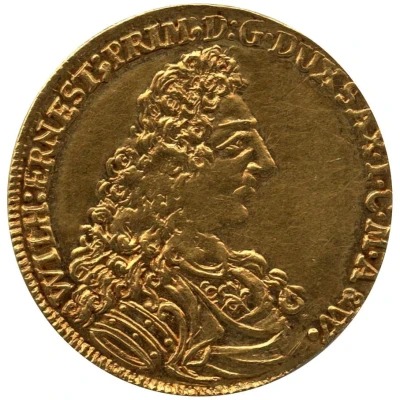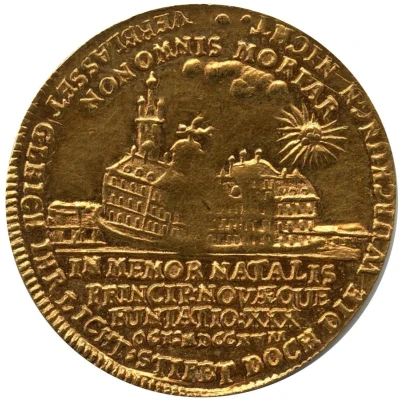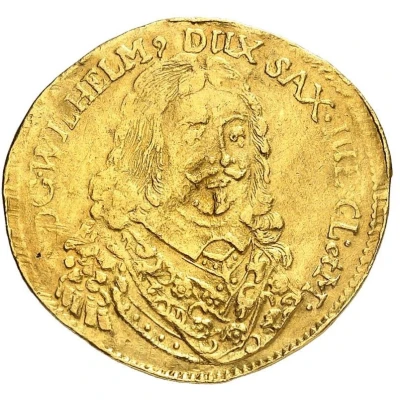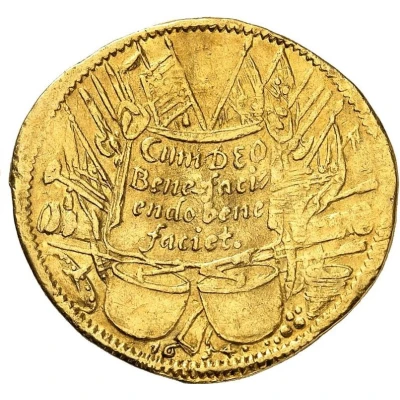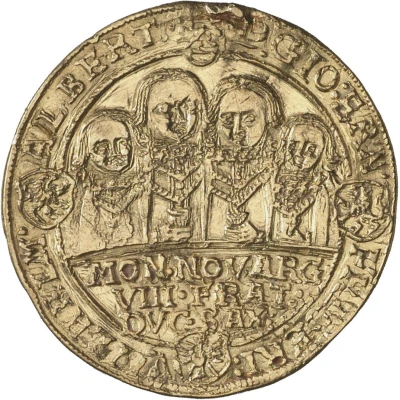
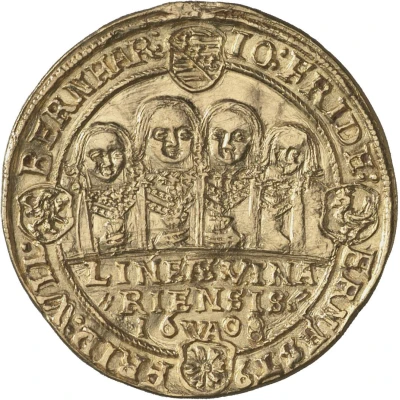

© Münzkabinett - Staatliche Museen zu Berlin (CC BY-SA 4.0)
2 Goldgulden - John Ernest I and his seven brothers
| Gold | 6.77 g | 30 mm |
| Issuer | Duchy of Saxe-Weimar (German States) |
|---|---|
| Issuer | Duchy of Saxe-Weimar (German States) |
| Type | Standard circulation coin |
| Type | Standard circulation coin |
| Years | 1608-1614 |
| Years | 1608-1614 |
| Value | 2 Goldgulden (6.5) |
| Value | 2 Goldgulden (6.5) |
| Currency | Thaler (1572-1740) |
| Currency | Thaler (1572-1740) |
| Composition | Gold |
| Composition | Gold |
| Weight | 6.77 g |
| Weight | 6.77 g |
| Diameter | 30 mm |
| Diameter | 30 mm |
| Shape | Round |
| Shape | Round |
| Demonetized | Yes |
| Demonetized | Yes |
| Updated | 2024-10-05 |
| Numista | N#417835 |
|---|---|
| Rarity index | 100% |
Reverse
Busts of 4 brothers facing, legend divided by 4 small shields of arms, 3-line inscription with date in exergue.
Script: Latin
Lettering:
IO: FRIDE: ERNEST9 FRID: WIL• BERNHAR:
LINEÆ: VINA
RIENSIS.
16 08
WA
Interesting fact
The 2 Goldgulden coin from the Duchy of Saxe-Weimar features a unique design, with John Ernest I and his seven brothers depicted on the obverse, while the reverse features the coat of arms of the Saxon Duchies. This coin is notable for its historical significance, as it was issued during a time of great political and religious upheaval in Europe, and its design reflects the complex political and dynastic relationships of the era. Additionally, the use of gold in the coin's composition gives it a high level of durability and scarcity, making it a valuable collector's item for numismatists.
